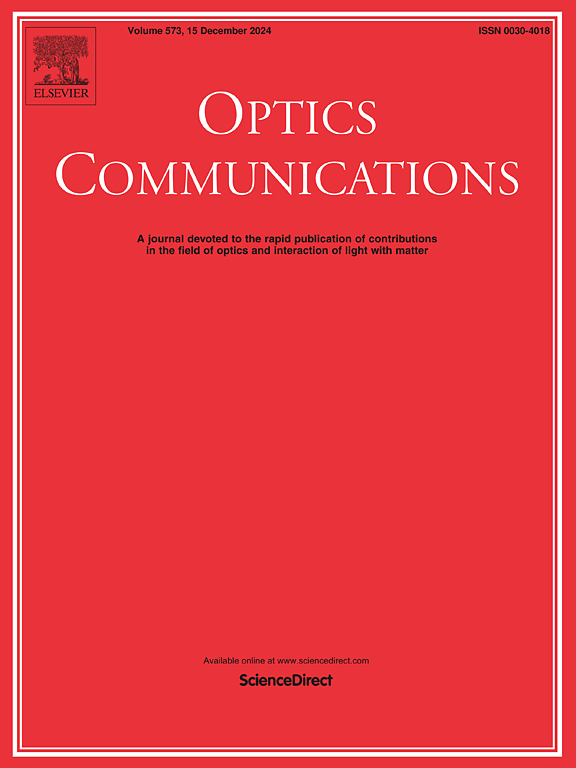Impact of receiver bandwidth on the performance of nonlinear volterra equalizer in IM/DD systems
IF 2.2
3区 物理与天体物理
Q2 OPTICS
引用次数: 0
Abstract
Nonlinear electrical equalization is an effective means to compensate for nonlinear waveform distortions in short-haul intensity-modulation (IM)/direct-detection (DD) optical transmission systems. Nonlinear distortions contain broader spectral components than the original signal. Thus, a wide receiver bandwidth and high sampling rate are beneficial to effective compensation of nonlinear distortions. However, this leads to poor signal-to-noise ratio at the receiver. In this paper, we investigate the impact of receiver bandwidth on the performance of 2nd-order nonlinear Volterra equalizer in IM/DD transmission systems. Through the computer simulation and the experimental verification performed with 4-ary pulse amplitude modulation signals, we show that an optimum receiver bandwidth for bit-error ratio performance increases with the amount of nonlinear distortions in IM/DD systems. We also show that the sampling rate should also be increased to avoid the aliasing of the nonlinear distortion components. The cost of the receiver increased by the wider receiver bandwidth and higher sampling rate could be offset in part by the non-integer fractionally sampled nonlinear Volterra equalizer.
接收器带宽对 IM/DD 系统中非线性 volterra 均衡器性能的影响
非线性电均衡是补偿短途强度调制(IM)/直接检测(DD)光传输系统中非线性波形失真的有效手段。非线性失真包含比原始信号更宽的频谱成分。因此,宽接收器带宽和高采样率有利于有效补偿非线性失真。然而,这会导致接收器信噪比较低。本文研究了接收器带宽对 IM/DD 传输系统中二阶非线性 Volterra 均衡器性能的影响。通过计算机仿真和使用四阶脉冲幅度调制信号进行的实验验证,我们发现,在 IM/DD 系统中,误码率性能的最佳接收器带宽会随着非线性失真量的增加而增加。我们还表明,还应该提高采样率,以避免非线性失真成分的混叠。更宽的接收器带宽和更高的采样率所增加的接收器成本,可通过非整数分数采样非线性 Volterra 均衡器部分抵消。
本文章由计算机程序翻译,如有差异,请以英文原文为准。
求助全文
约1分钟内获得全文
求助全文
来源期刊

Optics Communications
物理-光学
CiteScore
5.10
自引率
8.30%
发文量
681
审稿时长
38 days
期刊介绍:
Optics Communications invites original and timely contributions containing new results in various fields of optics and photonics. The journal considers theoretical and experimental research in areas ranging from the fundamental properties of light to technological applications. Topics covered include classical and quantum optics, optical physics and light-matter interactions, lasers, imaging, guided-wave optics and optical information processing. Manuscripts should offer clear evidence of novelty and significance. Papers concentrating on mathematical and computational issues, with limited connection to optics, are not suitable for publication in the Journal. Similarly, small technical advances, or papers concerned only with engineering applications or issues of materials science fall outside the journal scope.
 求助内容:
求助内容: 应助结果提醒方式:
应助结果提醒方式:


